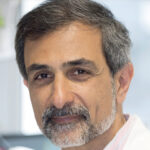Link to Pubmed [PMID] – 19575640
Annu. Rev. Cell Dev. Biol. 2009;25:671-99
The regulation of self-renewal, cell diversity, and differentiation can occur by modulating symmetric and asymmetric cell divisions. Remarkably, asymmetric cell divisions can arise through multiple processes in which molecules in the cytoplasm and nucleus, as well as template “immortal” DNA strands, can segregate to one daughter cell during cell division. Explaining how these events direct distinct daughter cell fates is a major challenge to understanding how the organism is assembled and maintained for a lifetime. Numerous technical issues that are associated with assessing how distinct cell fates are executed in vivo have resulted in divergent interpretations of experimental findings. This review addresses some of these points and considers different developmental model systems that attempt to investigate how cell fate decisions are determined, as well as the molecules that guide these choices.

